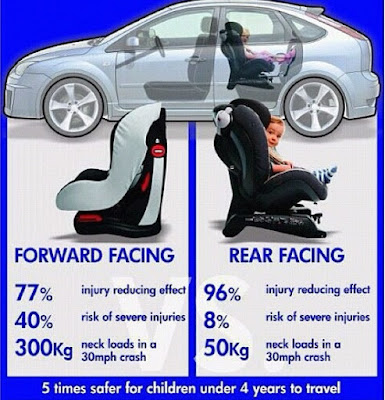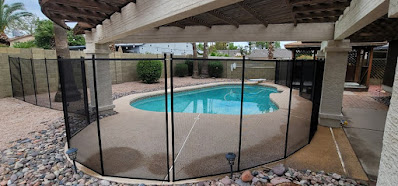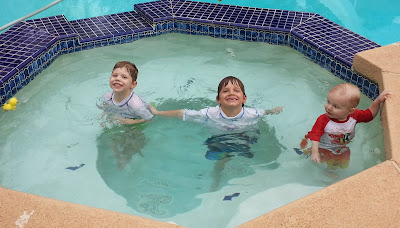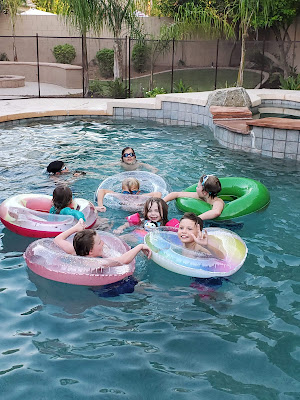Newsletter April 2021
Important Dates
Youth Sports Safety Month
4/3- 4/9 National Window Safety Week
4/7 World Health Day
4/10 National Youth HIV and AIDS Awareness Day
4/23-4/29 National Infertility Awareness Week
4/24-4/30 National Infant Immunization Week
National Autism Awareness Month
We hope the month of April is filled with health and safety. Spring has arrived and so have outdoor youth sports; remember to stay safe with the proper protective gear. The first full week of April is National Window Safety Week, but it is important to practice all year round. So, this month's safety newsletter will focus on home WINDOW SAFETY and ways to keep your little ones safe from window falls. Within it, you will find some helpful tips from the National Safety Council, as well as a printable safety checklist for your home and children's printable activity book to help your child remember safety precautions involving windows.

Youth Sports Safety Month
"To help keep kids in the game for life, STOP (Sports Trauma and Overuse Prevention) Sports Injuries targets the sports that have the highest rates of overuse and trauma injuries. Check out our helpful tip sheets to learn about how to stay safe when playing sports.
STOP Sports Injuries wants to be sure that you have all the information you need to keep kids in the game for life. Whether you are an athlete, coach, healthcare provider or parent, we have the sports injury prevention tips and tools to make sure safety is your first priority." Information and TIPS resources from Stop Sports Injuries.
Window Fall Prevention

To protect children, the Window Safety Task Force offers the following tips:
- When young children are around, keep windows closed and locked.
- When opening a window for ventilation, use those located out of a child’s reach.
- Avoid placing furniture near windows to prevent young children from climbing and gaining access to an open window.
- Don’t allow children to jump on beds or other furniture to help reduce potential falls.
- Don’t rely on insect screens to prevent a window fall. Insect screens are designed to keep bugs out, not to keep children in the home.
- Supervise children to keep child’s play away from windows, balconies or patio doors.
- Install ASTM F2090 compliant devices designed to limit how far a window will open or window guards (with quick-release mechanisms in case of fire or other emergency) to help prevent a fall.
- Teach your child how to safely use a window to escape during an emergency, such as a fire.
Visit www.nsc.org/windowsafetytaskforce, as well as the window safety sections of the AAMA and WDMA websites to learn more. Follow the Window Safety Task Force on Twitter and Facebook for more tips and updates on this important safety issue.
* According to Safe Kids Worldwide’s 2015 Report to the Nation: Protecting Children in Your Home
http://www.safekids.org/research-report/report-nation-protecting-children-your-home-february-2015
Printable Window Safety Resources

- ACTIVITY BOOK FOR KIDS (Click Link for PDF)
- This resource goes through what safety measures to practice with your children as well as other fun coloring sheets and games to help your child remember how to stay safe around windows!
- Resources to find more information on window safety:
- National Fire Protection Association, Department of Public Education, One Batterymarch Park Quincy, MA 02269-9101
- National Safety Council, 1121 Spring Lake Drive Itasca, IL 60143-3201
RECALLS:
March 22, 2023 NHTSA; Dorel Juvenile Group recalled its Maxi-Cosi Coral XP Rear-Facing Infant Seats with model number IC313 because the inner carrier is not sufficient to restrain a child without the use of the outer carrier, posing an increased risk of injury in the event of a crash. Units: About 14,510.
March 17, 2023 CPSC; Mockingbird expands its November 2022 recall of Mockingbird Single-to-Double Strollers to include its Single Strollers because the lower side of the stroller frame can crack, posing a fall risk to children in the stroller. Units: About 25,390 (an additional 149,000 in 2022).
March 16, 2023 CPSC; Sunbeam Queen Size Heated Blankets sold at Amazon and small independent stores nationwide were recalled because the blankets can overheat, posing fire and burn hazards. Units: About 43,000 (an additional ~15,000 in Canada).
March 16, 2023 CPSC; Fredericksburg Farms recalled its 10 Ounce Scented Candles with Glass Lids because some of the glass lids are too tight causing the jar to break when the lid is forcibly removed, posing a laceration hazard. Units: About 6,500.
March 16, 2023 CPSC; Ecoxall recalled its Ecoxall Sodium and Potassium Hydroxide because the packaging of the products is not child resistant, posing a risk of chemical burns and irritation to the skin and eyes. Additionally, the product label fails to include the word “poison” for the poisonous chemicals. Units: About 440.
March 16, 2023 CPSC; Pfizer recalled its Nurtec ODT orally disintegrating tablets, 75 mg 8-Unit Dose blister packs because the packaging of the prescription drugs is not child resistant, posing a risk of poisoning if the contents are swallowed by young children. Units: About 4.2 million.
March 16, 2023 CPSC; IKEA recalled its LETTAN Mirrors because the plastic fittings that attach the mirror to the wall can break, causing the mirror to fall, posing a laceration hazard to consumers. Units: About 22,400 (an additional ~17,500 in Canada).
March 16, 2023 CPSC; Polaris recalled its Model Years 2021-2023 Sportsman 450 and 570 All-Terrain Vehicles (ATVs) because an improperly assembled wiring harness can contact the brake line and/or vehicle frame during use which can result in a loss of the use of the front brakes and/or fire, posing fire and crash hazards. Units: About 80,000 (an additional ~13,900 in Canada).
March 9, 2023 CPSC; BeyondMedShop recalled its Vaunn Medical Bed Assist Rail because the rail is attached to an adult’s bed, users can become entrapped within the bed rail or between the bed rail and the side of the mattress, posing a serious entrapment hazard and risk of death by asphyxiation. Units: About 102,000.
March 9, 2023 CPSC; Fantasia Trading recalled its Anker 535 Power Banks (PowerCore 20k) because the lithium-ion batteries in the recalled power banks can overheat, posing a fire hazard. Units: About 42,000 (an additional ~620 in Canada).
March 9, 2023 CPSC; Crib Bumpers sold online at Aliexpress and Temu were recalled because padded crib bumpers are banned under federal law, posing a suffocation hazard to infants if they roll or move into a position that obstructs breathing. Units: About 125.
March 9, 2023 CPSC; Bedshe International recalled its Bedsure Electric Heating Blankets and Pads because the controller for the blankets and pads can malfunction, posing fire and thermal burn hazards. Units: About 350,000.
|
|
|
March 9, 2023 CPSC; Epoch Everlasting Play recalled its Calico Critters Animals Figures and Sets sold with Bottle and Pacifier Accessories because the accessories pose a choking hazard to children. Units: About 3.2 million.
March 9, 2023 CPSC; Akerson Enterprises recalled its Kindred Bravely Bamboo Nursing Hoodies because the drawcord on the hoodies has small plastic caps that can be swallowed by a nursing baby, posing a choking hazard. Units: About 7,500.
March 9, 2023 CPSC; Vornado Air recalled its SRTH Small Room Tower Heaters because they have a miswiring due to a manufacturing error which can cause the tower heater to overheat, posing a fire hazard. Units: About 1,450.
March 9, 2023 CPSC; Sandoz recalled its Aprepitant capsules and Lidocaine and Prilocaine cream because the packaging of the prescription and products is not child resistant, posing a risk of poisoning if the contents are swallowed by young children. Units: About 156,750.
March 9, 2023 CPSC; YETI recalled its soft coolers and gear cases because the magnet-lined closures can fail and result in detached magnets, posing a risk of serious injury or death if ingested. Units: About 1.9 million (an additional ~40,760).
March 9, 2023 NHTSA; Dorel Juvenile Group recalled certain model numbers of its Safety 1st onBoard 35 Secure Tech, Maxi-Cosi Coral XP, Maxi-Cosi Mico XP Max, Maxi-Cosi Mico XP, Maxi-Cosi Mico Luxe+, and Maxi-Cosi Infant Base child seats because the lower seat anchors used to secure the child seat base may fail, allowing the child seat to detach and posing increased risk of injury in the event of a crash. Units: About 59,457.
March 02, 2023 CPSC; Multi-Purpose Kids Bike Helmets sold at Amazon were recalled because the helmets do not comply with the positional stability and impact attenuation requirements of the CPSC federal safety standard, posing a risk of head injury to children. Units: About 120.
March 02, 2023 CPSC; Active Sports recalled its CTRL Imperial Wakeboard Bindings because, during use, they can partially detach from the binding baseplate at the heel or the external binding mount can crack and detach from the wakeboard, causing the user to lose their balance and fall into the water. Units: About 850.
March 02, 2023 CPSC; Smocked Runway recalled its Classic Whimsy children’s pajamas because the clothing fails to meet the federal flammability standards for children’s sleepwear, posing a risk of burn injuries to children. Units: About 7,200.
March 02, 2023 CPSC; Helly Hansen recalled its Adult workwear sweatshirts and hoodies because the clothing fails to meet flammability standards for clothing textiles, posing a risk of burn injuries to consumers. Units: About 13,900 (an additional ~128,680 in Canada).
March 02, 2023 CPSC; Primark recalled its Children’s Bamboo Plates because they have elevated levels of lead and formaldehyde, which are toxic if ingested by children and can cause adverse health effects. Units: About 1,665.
March 02, 2023 CPSC; Patagonia recalled its Infant Capilene Midweight Base Layer Sets because the snaps in the bodysuit can detach, posing a choking hazard if mouthed by infants. Units: About 8,000 (an additional ~217 in Canada). |
|
|
March 02, 2023 CPSC; TJX recalled its Office Chairs because the back of the chair can break or detach from the seat base when a consumer is seated in the chair, posing a fall hazard. Units: About 81,700 (an additional ~1,000 in Canada).
February 24, 2023 FDA; Global Pharma Healthcare recalled batch No. H29 of its Artificial Eye Ointment because the product has possible microbial contamination, posing a risk of eye infection that could lead to blindness.
February 23, 2023 CPSC; Mainstays recalled its Three-Wick Candles because the wicks can burn too close to the side of the container, causing the glass to break, posing fire and laceration hazards. Units: About 1,210,000.
February 23, 2023 CPSC; Platinum Health recalled its LumaRail Bed Assist Rails because when the rails are attached to an adult’s bed, users can become entrapped within the bed rail or between the bed rail and the side of the mattress, posing a serious entrapment hazard and risk of death by asphyxiation. Units: About 53,000.
February 23, 2023 CPSC; Clark Associates recalled its Lancaster Table & Seating brand High Chairs because the high chairs can break, posing a fall hazard to children. Units: About 22,400 (an additional ~52 in Canada).
February 23, 2023 FDA; Bindle Bottles recalled its 32 Oz, 24 Oz, 20 Oz, and 13 Oz Insulated Food and Drink Bottles because the product may contain an area of exposed lead that may adulterate unpackaged food stored in the bottom compartment of the bottle, posing a risk of lead poisoning. |
|
|
FOR MORE INFORMATION
Contact
ARIZONA CHILDPROOFERS
480-634-7366
Childproofing, Pool Fences, Car Seat Safety, Community Education


.png)

































.png)



